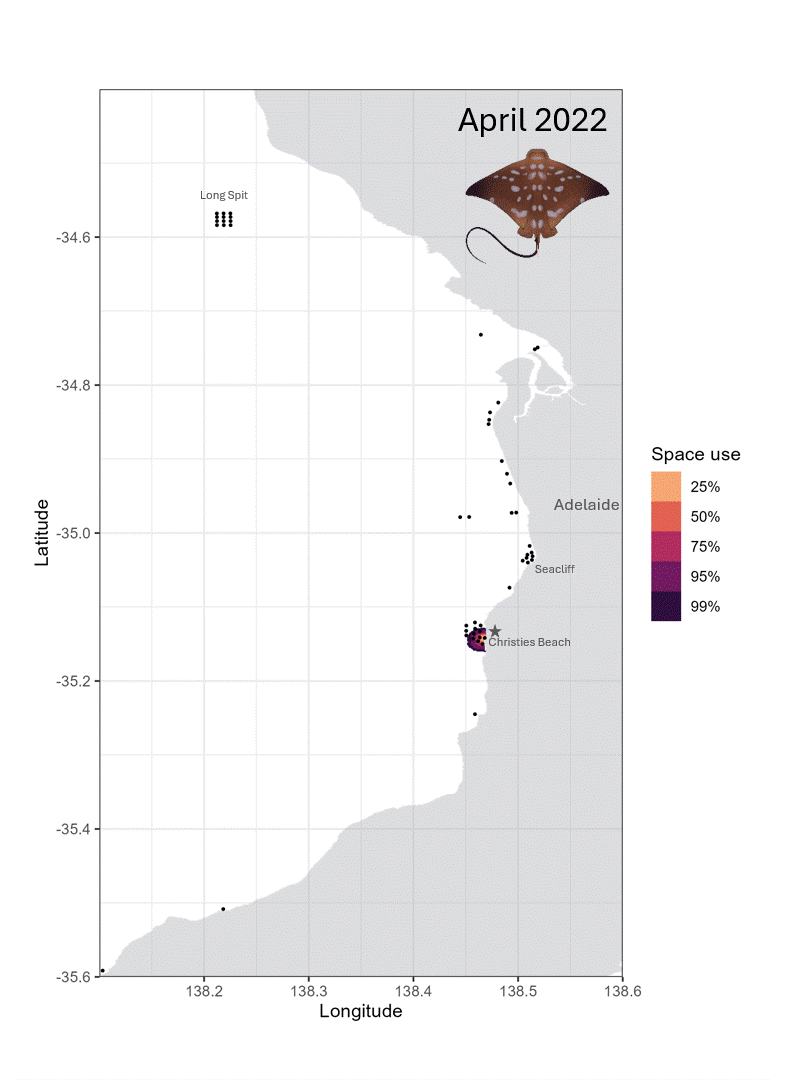Results
So far we have found that the populations of Port Jackson sharks and southern eagle rays studied here appear restricted to the Gulf St Vincent, and spend a lot of time in the nearshore environment of the Adelaide metropolitan coastline.


Long Spit population
Christies Beach population
Port Jackson sharks
These species appear to move up and down the Adelaide metropolitan coastline, spending a lot of time in the Christies Beach area, Port River, and Long Spit (a shallow seagrass meadow in the Gulf). Port Jackson sharks close to shore and those located around Long Spit also have limited intermixing. The movements uncovered here are in stark contrast to the large (up to 600 km) migrations undertaken by the species in eastern Australian waters.
Southern eagle rays
This species appears much more restricted to nearshore reefs and beaches. Populations of resident eagle rays with limited movements were discovered at Christies Beach and Seacliff, with no overlap between the populations detected. This contrasts patterns seen in eagle rays at Coffin Bay, which seasonally depart the coastal area in colder months and return when it gets warmer.


Christies Beach population
Seacliff population
The diet of these animals is currently being quantified to identify what could be driving these movement patterns. The movement of Port Jackson sharks to the Port River and then back to either Long Spit or Christies Beach is hypothesised to be driven by reproductive strategies. The Port River is a productive mangrove ecosystem, so individuals may travel there to bulk up on nutrients prior to mating or egg-laying.
The restricted movements of eagle rays, which were mostly large, mature females, could also be a reproductive strategy. Nearshore environments can provide plenty of prey and shelter for reproducing females and their offspring. Furthermore, restricted female populations and more mobile male populations is a pattern seen in other elasmobranch species, though more male eagle rays would need to be tagged to determine if that pattern is occurring here.

